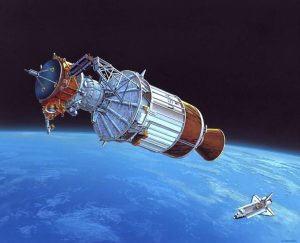- This topic is empty.
-
AuthorPosts
-
11/04/2025 at 11:21 #4565
When it comes to industrial processes, heat exchangers play a pivotal role in enhancing energy efficiency and optimizing thermal management. However, one of the most frequently asked questions in the industry is: How much should a heat exchanger cost? The answer is not straightforward, as the price of heat exchangers can vary significantly based on several factors. In this post, we will delve into the intricacies of heat exchanger pricing, exploring the various elements that influence costs, and providing insights to help you make informed purchasing decisions.
Understanding Heat Exchanger Types
Before we can discuss costs, it’s essential to understand the different types of heat exchangers available in the market. The most common types include:
1. Shell and Tube Heat Exchangers: These are widely used in oil refineries and chemical plants. They consist of a series of tubes, one set carrying the hot fluid and the other the cold fluid. Prices typically range from $1,000 to $20,000, depending on size and materials.
2. Plate Heat Exchangers: Known for their compact design and high efficiency, plate heat exchangers are often used in food processing and HVAC applications. Their costs can range from $2,000 to $15,000.
3. Air-Cooled Heat Exchangers: These are used in applications where water is scarce. They can be more expensive due to their design and the materials used, with prices ranging from $5,000 to $30,000.
4. Double-Pipe Heat Exchangers: These are simpler in design and generally less expensive, with costs typically between $500 and $5,000.
Key Factors Influencing Heat Exchanger Costs
1. Material Selection: The choice of materials significantly impacts the cost. Stainless steel, for instance, is more expensive than carbon steel but offers better corrosion resistance, making it suitable for harsh environments. Specialized alloys can further increase costs.
2. Size and Capacity: Larger heat exchangers designed to handle higher flow rates will naturally cost more. The required thermal performance specifications will also dictate the size and complexity of the unit.
3. Design Complexity: Custom-designed heat exchangers tailored to specific applications can be significantly more expensive than standard models. The engineering and design process adds to the overall cost.
4. Manufacturing Process: The method of manufacturing—whether it’s welded, brazed, or mechanically assembled—can influence the price. Advanced manufacturing techniques often lead to higher costs but can also result in improved efficiency and longevity.
5. Market Demand and Supply: Economic factors, including demand fluctuations and raw material prices, can affect heat exchanger costs. During periods of high demand, prices may increase, while a surplus of supply can lead to lower prices.
Additional Costs to Consider
When budgeting for a heat exchanger, it’s crucial to consider additional costs beyond the initial purchase price:
– Installation Costs: Depending on the complexity of the installation, labor costs can vary significantly. It’s advisable to obtain quotes from multiple contractors to ensure competitive pricing.
– Maintenance and Operating Costs: Regular maintenance is essential for optimal performance. Consider the long-term operational costs, including energy consumption and potential downtime.
– Warranty and Support: Investing in a heat exchanger with a robust warranty and reliable customer support can save costs in the long run. Ensure that the manufacturer provides adequate service options.
Conclusion: Making an Informed Decision
Determining how much a heat exchanger should cost involves a comprehensive understanding of various influencing factors. By considering the type, materials, size, and additional costs, you can better assess the value of a heat exchanger for your specific application.
-
AuthorPosts
- You must be logged in to reply to this topic.


